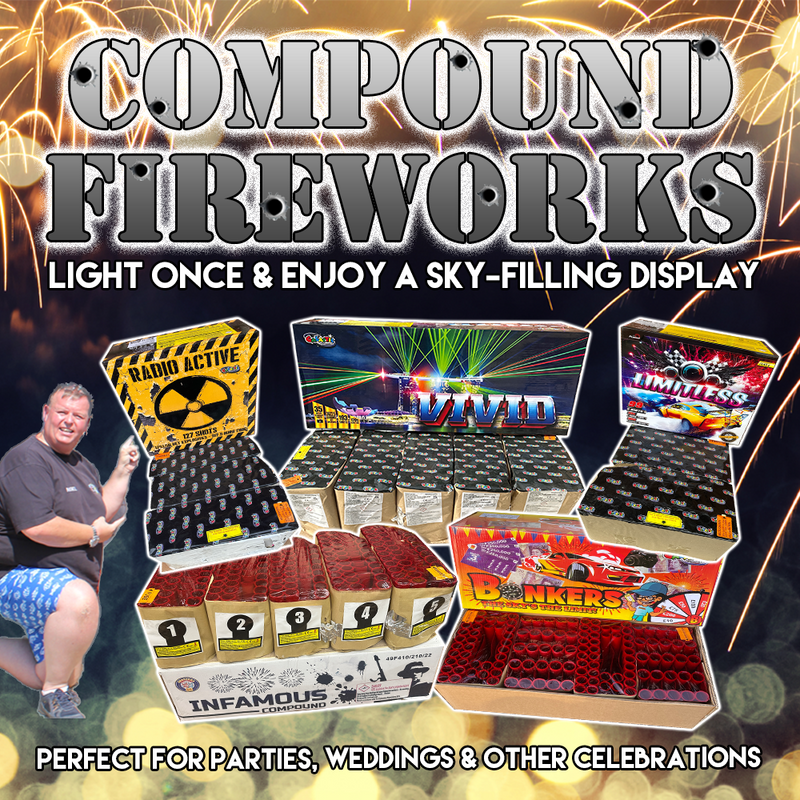Popular Searches
Popular Searches
Fireworks For Sale Online
The UK's best range of fireworks for sale online.
At Galactic Fireworks, we pride ourselves on providing our customers with a range of products of genuinely outstanding quality; we allow everyone to enjoy a premium quality display from the comfort of their back garden. I can honestly say there isn't another company out there that has a selection of fireworks that rivals ours.
Established over thirty years ago by Nigel Turver, aka Supercar Nigel, Galactic's founder grew up with a hunger for pyrotechnics that's second to none. Even to this day, all these years on, when he goes to our storage and looks around at all the pyro-goodies, he gets a huge smile on his face. This enthusiasm and genuine passion have been passed down the family, with Nigel's sons, James, and Harry, now taking the reins of the business and carrying Galactic to the next generation.
Our expansive range includes firework Cakes, Rockets, Sparklers, Fountains, Mines, Roman Candles, Ice Fountains, and Catherine Wheels. With outstanding products from leading manufacturers, including Brothers Pyrotechnics, Black Cat, and Celtic Fireworks - as well as our very own range - we have something to suit every taste. With a broad range of special offers and buy one get one frees, we can offer two things that don't always go hand in hand: the highest quality and incredible prices.
Across our range, we stock low-noise fireworks, gender reveal fireworks, and garden fireworks for every special occasion, New Year’s Eve, birthdays, weddings, Diwali, and bonfire night. You can buy fireworks online and have them delivered directly to your door.
If you want to sell fireworks yourself, we also have a full range of wholesale fireworks to buy. Fill out the form on our wholesale fireworks page, and we will activate your wholesale account. Wholesale is subject to a minimum order value, and we also need to see your storage licence to activate your account and ensure that all legislation is complied with. We take firework safety and laws with the utmost importance here at Galactic, and remember, it's illegal for anyone under 18 to possess fireworks in a public place.
If you aren't a wholesaler and would still like to purchase bulk, we offer a comprehensive range of bulk buys. As a 'standard' customer, you're still able to shop in our bulk buy section and make huge savings across the board on a selection of different products. Please be aware of your storage capability and legislation, and don't exceed the legal limit.
Our team at Galactic also regularly puts on professional firework displays. We can assist with everything from wedding fireworks shows to bespoke displays. We've operated displays of all sizes and would be more than happy to help design, set up and fire a bespoke one for your event. We've years of experience in the field and can guarantee you will not be disappointed with what we can offer. Speak to one of our staff members directly, and we'll be happy to help and advise.
With four physical firework shops, it's easier for anyone to find quality fireworks near me: we’re the top local provider in areas including Sheffield, Rotherham, Chesterfield, Barnsley, and Doncaster. All South Yorkshire, West Yorkshire, Nottinghamshire, and Derbyshire. Our main store in Dinnington, just outside of Sheffield, often sees people travel from far and wide across the country; it's a pyromaniac's dream, with a vast selection all available to view and purchase immediately. Our friendly, knowledgeable staff are always available to help and get you a brew.




































